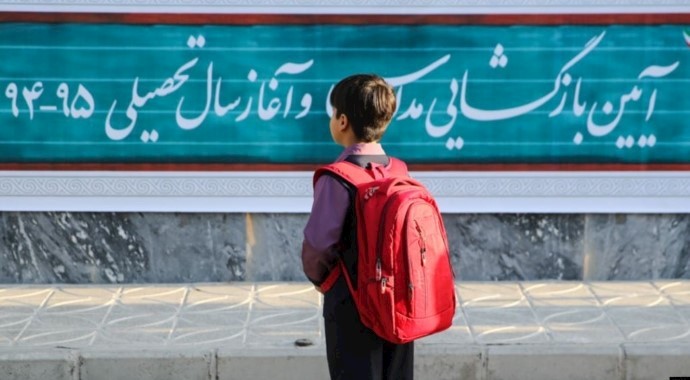Analysis by PMOI/MEK
Iran, November 2, 2019—On October 13, the Iranian regime’s parliament (Majlis) ratified a new measure that tasks the education ministry to manage all education units under its care in governmental and non-governmental format until the end of the 2019-2020 academic year.
For years, the division of schools between the private and public sector has been a topic of dispute between different regime factions, whose main goal is to profiteer and fill their pockets from the country’s resources and assets. Therefore, the new bill has triggered new disputes among Iranian officials.
While regime officials discussed the October 13 education bill, none of them asked what happened to the promises of providing free education to the people. Neither did any of them mention that according to the article 30 of the regime’s constitution, the government is responsible for providing free education facilities to children until high school graduation.
New excuses to steal from the Iranian people
The regime’s new bill for Iran’s education system is described as non-governmental management of schools. At first glance, it is supposed to provide new venues to support the education system as the government is strained to fund schools. After all, private schools are pretty common in almost every country. But in reality, this is just another facet of the Iranian regime’s “privatization policy,” which has been driving the country’s economy toward bankruptcy and collapse and is slowly destroying Iran’s education system.
In fact, by handing over the control of schools to the private sector, the government is shrugging off its responsibilities to facilitate the education of the Iranian population, especially the poor and marginalized sectors.
In March, when presenting the bill, Hassan Rouhani, the president of the regime, explicitly said, “The most important goal of this bill is to reduce the costs of managing the education system.”
But who is going to cover the costs of Iran’s education system? Naturally, the growing privatization of schools and education facilities mean Iranian families must increasingly bear the burden of the education of their children.
There’s no doubt that privatizing schools will relieve the government of what little oversight it is enforcing and will result in the considerable reduction of the quality of Iran’s education system. On October 26, the state-run Tasnim news agency quoted deputy education minister Rezvan Hakimzadeh as saying, “In public schools, especially in the poorer districts, due to shortcomings, instead of hiring qualified teachers, the used methods are effectively degrading the quality of education, and we’ve seen no improvement in the system.”
Hakimzadeh added, “60 percent of schoolchildren are studying in classes that lack quality.”
The consequences of privatizing Iran’s schools
In August, Majid Hosseini, a professor at Tehran University, said, “The wealthy want to register their children in private schools instead of public schools, and there are those who want the poor to be eliminated from the education cycle. The problem is that they want to eliminate the poor.”
Naturally, the rich segment of Iran’s population is mostly constituted of the ruling elite and merchants who have deep ties to the regime. This means that the poor people of Iran, who consist a very large part of the country’s population and can’t pay the high costs of private schools, must just contend with the meager facilities that public schools offer. Alternatively, they can forgo sending their children to school altogether!
The direct consequences of these destructive policies are clear. “According to estimates, there are about 3 million children who are deprived of school in Iran,” the state-run Arman daily wrote on October 24. Other estimates state the number of uneducated children at 7.4 million.
The effects of the destruction of Iran’s education system is also visible in the streets of Iran, where millions of children are forced into labor at a very young age and others are searching in trash piles for some food to eat.
#Iran‘s children are the first victims of the regime’s plundering & atrocities.https://t.co/BueOpX4JYX
— People’s Mojahedin Organization of Iran (PMOI/MEK) (@Mojahedineng) November 12, 2018
The economic divide in Iran’s education system
The establishment of private schools by the wealthy individuals with ties to the regime has become a common sight in Iran.
In a nutshell, what has been described by the Majlis as the division of schools between private and public in nothing but the legalization and institutionalization of privatizing Iran’s education system, which frees up more funds for the mullahs’ regime to spend on terrorism, warmongering, suppression and development of ballistic missiles and atomic bombs.
Why hasn’t the regim been able to make the slightest improvement in Iran’s education system despite having been sitting on the country’s vast wealth and resources for more than four decades? Why has basic education become an expensive commodity in Iran?
Of course, those who have caused this situation will have no answer to these questions. The real answer is being cried out in the streets of Iran by protesters from every segment of the Iranian society, who know that the real solution to the country’s problems are tied to the toppling of the mullahs’ regime and are shouting “Leave Syria, think about us” and “Death to dictator” in every corner of Iran.





